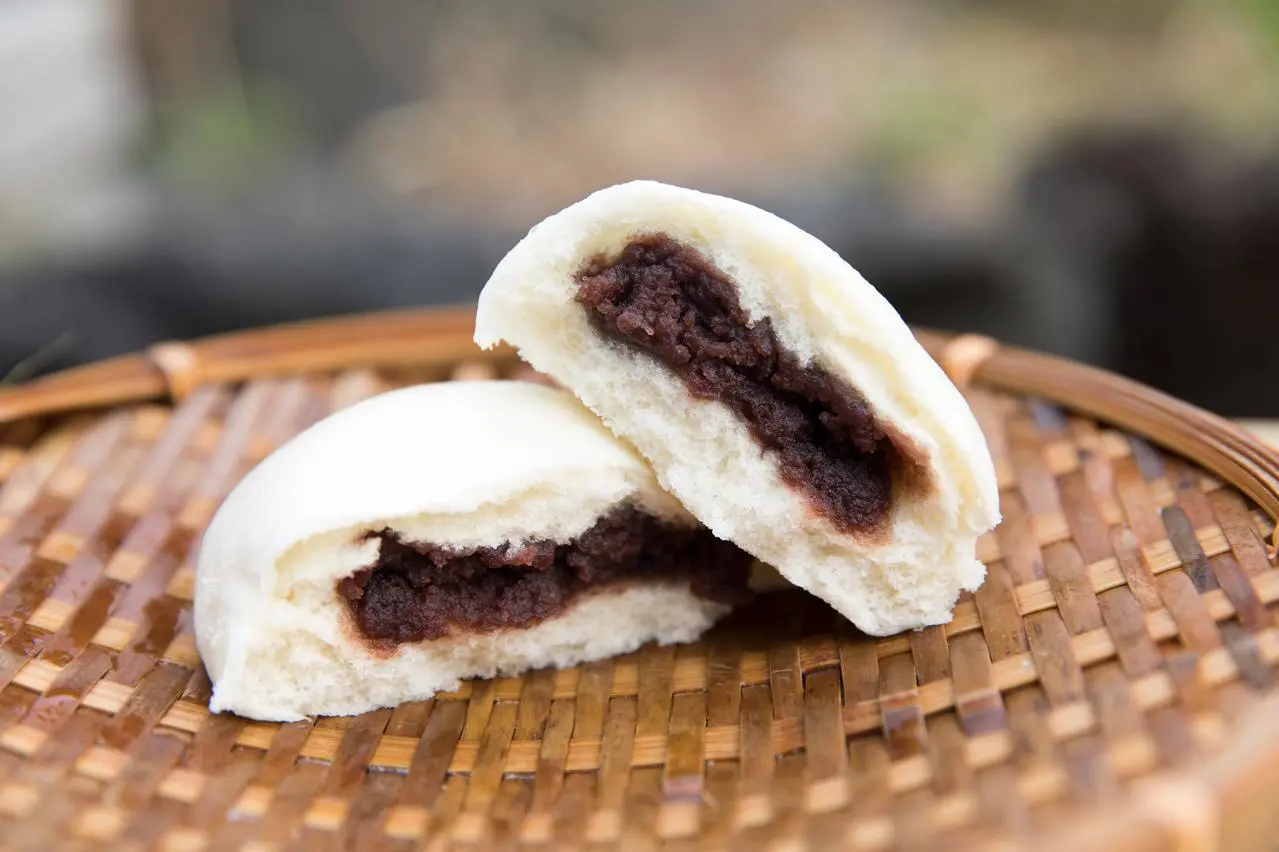Sake Manju
Does it really contain sake?
Sake Manju introduction
Sake Manju (酒まんじゅう, Sake manju) is a beloved traditional sweet from the Houhi region, which encompasses Taketa City and Bungo-Ono City in southwestern Oita Prefecture. Surrounded by breathtaking mountain ranges such as the Sobo and Katamuki ranges, Aso’s outer rim, and Kuju Mountain, this area is bordered by Miyazaki and Kumamoto Prefectures. A summertime staple for local festivals, this unique manju is leavened using the natural fermentation power of koji (rice malt). Usually filled with sweet red bean paste (ogura-an), varieties without filling are also common in the Houhi region and go by different names such as "Shiira," "Shie Mochi," or "Shieppo." In the southern part of the prefecture, they are affectionately called "Bappo." Interestingly, while the term "sake" refers to the yeast-based liquid used in the fermentation process, the sweet does not actually contain alcohol. Traditionally enjoyed during May's Boys’ Festival, the summer Obon holidays, and various local celebrations, sake manju has also been a nourishing treat during breaks from farm work. In the winter, warm steamed manju are cherished for their ability to bring comfort and warmth. Since the preparation involves fermentation with rice koji, sake manju is easier to make in warmer months. Today, this nostalgic soul food remains deeply cherished by locals. You can still find shops selling freshly made Sake Manju throughout the year in Taketa and Bungo-Ono Cities.
Related videos
Other information
- NameSake Manju
- Area Oita
- Kind of food Local cuisine
Oita Other recommended dishes
Misaki Kakiage Donburi
Oita
Yoshino Torimeshi
Oita
Misaki Gazami (Blue Swimming Crab)
Oita
Hita Yakisoba
Oita
Whole Horse Mackerel Sushi
Oita
Sorakita Mochi
Oita
Local cuisinerelated dishes
Yamauchi Imonoko Soup
Akita
Toyama Dried Persimmons
Toyama
Chinsuko
Okinawa
Hitomoji Guruguru
Kumamoto
Kabosu
Oita
Cheese Manju
Miyazaki
Kind of food
Tenpura Sushi Ramen Seafood Soba & Udon Okonomiyaki & Takoyaki Bento & Onigiri Don dish Nabe dish Yakitori & Kusiyaki Meat dish Local cuisine